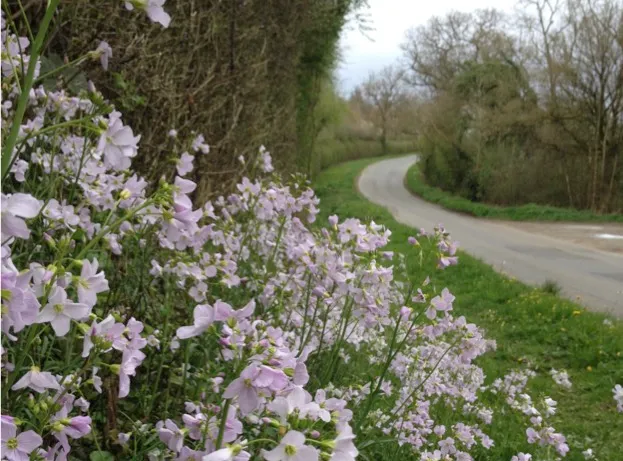Wildflowers and intensive agriculture don’t mix. This is one reason why so much of Britain’s farmland is bereft of colour nowadays – apart, that is, from the electric-yellow of oilseed rape and sunflower fields.
But there’s another place that is often ablaze with colour in late spring and summer. A place where you can still find dozens of wildflowers that have become scarce in our lowland farmland. Road verges.
Britain has 370,000km of roads, from motorways to minor rural lanes, and many are bordered by verges. These strips of land collectively make up an enormous linear nature reserve.
What’s more, many of our road verges are not sprayed with herbicides and other faming chemicals. Left to their own devices, these strips of land can develop into wildflower-rich substitutes for the traditional wildflower meadows and cornfields that have been lost since the 1950s.
Around 700 species of wildflowers now grow on British verges. They include everything from swathes of buttercups, ox-eye daisies and poppies to rare orchids.

Green-winged orchids © Trevor Dines/Plantlife
Road verges are a surprisingly diverse wildlife habitat. They take on a different character in different parts of the country, according to the climate, altitude and soil type, so there is no one ‘type’ of verge. And wildflower-rich verges can also support abundant populations of insects and mammals such as voles, which in turn attract predators such as kestrels and barn owls.
But our verges are under threat. Mowing is one of the key problems. Many verges are mown too early in the year, before most wild plants have had a chance to set seed.
The resulting piles of cuttings also choke delicate plants and boost soil fertility. You might think extra soil fertility would help, but it actually leads to reduced biodiversity. A few species thrive – mainly coarse grasses, nettles and cow parsley – and they end up swamping everything else.

Cow parsley © Trevor Dines/Plantlife
Other winners from current verge-management practices include cuckooflower, lesser celandine, cowslip, garlic mustard. These are all plants that flower and set their seed early, so they can spread before the mowers hit the road.
But the losers include yellow rattle, eyebright, white campion, field scabious, knapweed and betony. A host of orchids are also disappearing from Britain’s road verges, such as the frog, man, green-winged and greater butterfly orchids.
Councils have a responsibility to maintain highways in good condition – visibility and safety comes first. But there is no doubt that over-intensive management can have an adverse impact, says wild-plant conservation charity Plantlife. It has produced a Good Verge Guide and is working with councils across the UK to improve verge-management for wildflowers.

Cuckoo flower © Trevor Dines/Plantlife
Some councils are now experimenting with deliberately sowing yellow rattle onto verges. This semi-parasitic plant taps nutrients from grasses, reducing their growth by 40–60 per cent, and thus allows other wildflowers to thrive. “Yellow rattle acts like nature’s lawnmower,” says Plantlife’s Trevor Dines.
Conservationists hope that by tweaking how we look after road verges, they will continue to look spectacular in future summers. After all, this is some of the most-viewed wildlife habitat in Britain, giving pleasure to millions of people each day.

